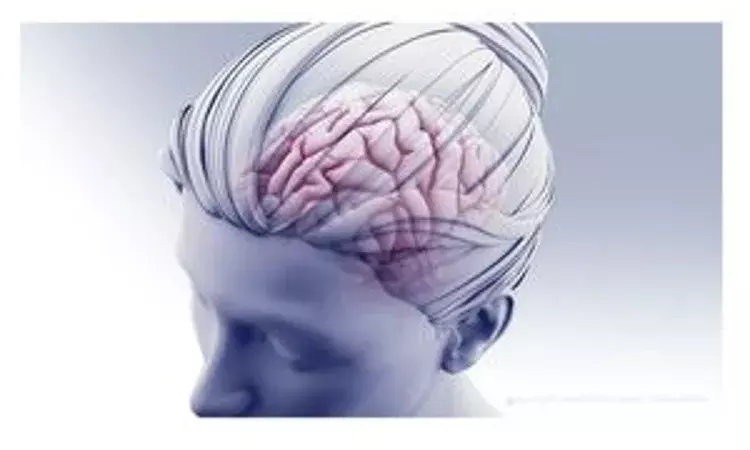- Home
- Medical news & Guidelines
- Anesthesiology
- Cardiology and CTVS
- Critical Care
- Dentistry
- Dermatology
- Diabetes and Endocrinology
- ENT
- Gastroenterology
- Medicine
- Nephrology
- Neurology
- Obstretics-Gynaecology
- Oncology
- Ophthalmology
- Orthopaedics
- Pediatrics-Neonatology
- Psychiatry
- Pulmonology
- Radiology
- Surgery
- Urology
- Laboratory Medicine
- Diet
- Nursing
- Paramedical
- Physiotherapy
- Health news
- Fact Check
- Bone Health Fact Check
- Brain Health Fact Check
- Cancer Related Fact Check
- Child Care Fact Check
- Dental and oral health fact check
- Diabetes and metabolic health fact check
- Diet and Nutrition Fact Check
- Eye and ENT Care Fact Check
- Fitness fact check
- Gut health fact check
- Heart health fact check
- Kidney health fact check
- Medical education fact check
- Men's health fact check
- Respiratory fact check
- Skin and hair care fact check
- Vaccine and Immunization fact check
- Women's health fact check
- AYUSH
- State News
- Andaman and Nicobar Islands
- Andhra Pradesh
- Arunachal Pradesh
- Assam
- Bihar
- Chandigarh
- Chattisgarh
- Dadra and Nagar Haveli
- Daman and Diu
- Delhi
- Goa
- Gujarat
- Haryana
- Himachal Pradesh
- Jammu & Kashmir
- Jharkhand
- Karnataka
- Kerala
- Ladakh
- Lakshadweep
- Madhya Pradesh
- Maharashtra
- Manipur
- Meghalaya
- Mizoram
- Nagaland
- Odisha
- Puducherry
- Punjab
- Rajasthan
- Sikkim
- Tamil Nadu
- Telangana
- Tripura
- Uttar Pradesh
- Uttrakhand
- West Bengal
- Medical Education
- Industry
Asymptomatic subdural hemorrhage in Newborns Not Tied to Long-Term Harm

Researchers have recently found that neurodevelopmental scores and gray matter volumes at age 2 years did not differ between asymptomatic neonates with subdural hemorrhage and control neonates, according to a study published in the Radiology.
Subdural hemorrhage (SDH) is thought to have a benign course in asymptomatic neonates. However, effects on neurodevelopmental outcomes have not been established.
Hence Carlos Zamora and associates from the Department of Radiology, Division of Neuroradiology and Department of Psychiatry, University of North Carolina School of Medicine, conducted the present study to evaluate neurodevelopmental outcomes, gray matter volumes, and MRI findings in asymptomatic neonates with SDH compared with control neonates.
This retrospective analysis was conducted among 311 neonates including 57 with SDH, between 2003 and 2016 and was based on data from the University of North Carolina Early Brain Development Study. The subgroup included 55 neonates with SDH and 55 matched control neonates. Neurodevelopmental outcomes were evaluated at 2 years of age by using the Mullen Scales of Early Learning (MSEL). All infants were imaged with 3.0-T MRI machines and were evaluated for SDH at baseline (neonates) and at ages 1 and 2 years. Volumetric MRI for brain segmentation was performed at ages 1 and 2 years. A secondary analysis was performed in neonates matched 1:1 with control neonates. Differences in categorical variables were measured.
The following findings were noted-
- Fifty-five of 57 neonates with SDH were delivered vaginally compared with 157 of 254 control neonates.
- There were no differences in perinatal, maternal, or obstetric parameters.
- There were no differences in composite MSEL scores or gray matter volumes between the neonatal SDH group and control neonates.
- There was no evidence of rebleeding at follow-up MRI.
Therefore, the authors concluded that "Neurodevelopmental scores and gray matter volumes at age 2 years did not differ between asymptomatic neonates with subdural hemorrhage and control neonates."
Dr. Nandita Mohan is a practicing pediatric dentist with more than 5 years of clinical work experience. Along with this, she is equally interested in keeping herself up to date about the latest developments in the field of medicine and dentistry which is the driving force for her to be in association with Medical Dialogues. She also has her name attached with many publications; both national and international. She has pursued her BDS from Rajiv Gandhi University of Health Sciences, Bangalore and later went to enter her dream specialty (MDS) in the Department of Pedodontics and Preventive Dentistry from Pt. B.D. Sharma University of Health Sciences. Through all the years of experience, her core interest in learning something new has never stopped. She can be contacted at editorial@medicaldialogues.in. Contact no. 011-43720751
Dr Kamal Kant Kohli-MBBS, DTCD- a chest specialist with more than 30 years of practice and a flair for writing clinical articles, Dr Kamal Kant Kohli joined Medical Dialogues as a Chief Editor of Medical News. Besides writing articles, as an editor, he proofreads and verifies all the medical content published on Medical Dialogues including those coming from journals, studies,medical conferences,guidelines etc. Email: drkohli@medicaldialogues.in. Contact no. 011-43720751


